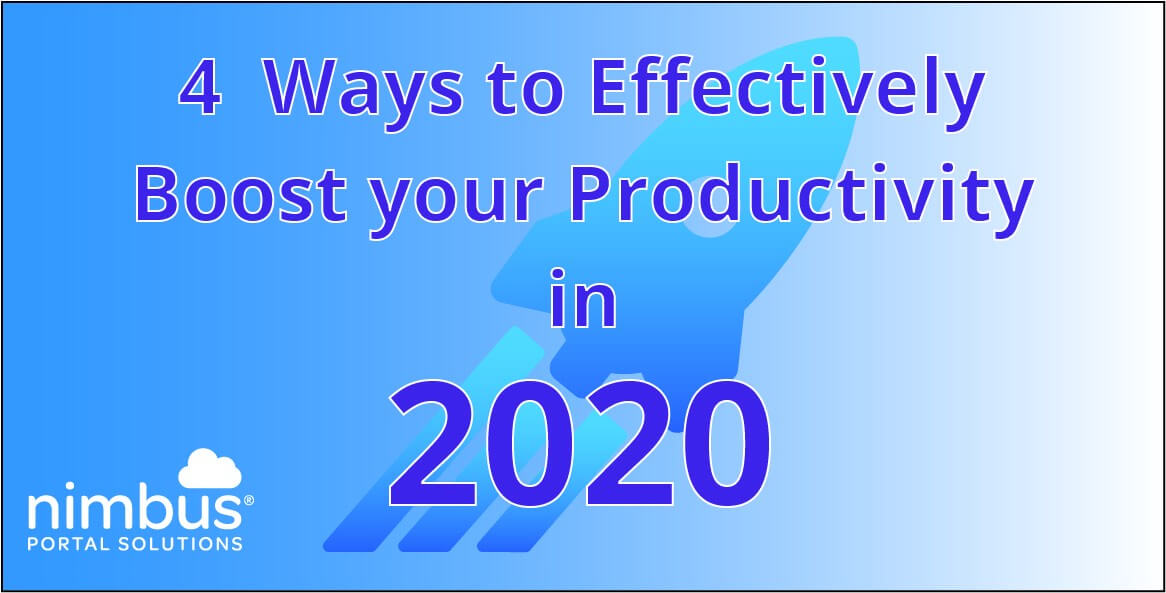
To get the most out of this year, we thought to start off by giving you some productivity tips. Because let’s face it, starting back at work after a nice long holiday is not the easiest thing! At least for most people. So, here are our top tips for improving business productivity in 2020 and beyond to help you remove that mental block and boost your productivity.
All work should always start with a higher-level conversation about
your goals and what you really want to achieve in life. Improving business productivity is no different. Work backwards from there to boost
your productivity. Start with the BIG question. What do you really want for your life right now? What are your
goals? For example, would you like to achieve a greater level of excellence in your work? Do you want to be happier and more relaxed? Do
you want your team to excel? Define your goals. Break them down into smaller units of measurement – monthly,
weekly and daily.
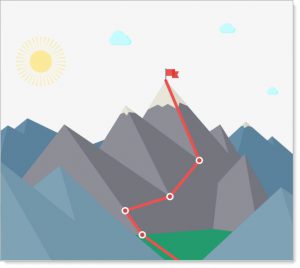
One of the best tips for improving business productivity on a monthly basis is to sit down on the first day of the month and ask yourself, “What do I want for THIS MONTH. Based on where I am right now, what are the major goals that I need to work on this month – on myself, in my relationships, and in my career contributions. How do I need to show up?How do I need to develop those relationships? And what could I give and deliver this month?”
Each and every week, block out some time to focus on what is important to you.Ask yourself, “What are my weekly priorities and due dates? What are the important conversations I need to have? Am I scheduling some creative time for myself?”.
Do this each morning before checking in to the world – sit down with your journal or calendar and ask yourself, “Ok, what must happen TODAY? What 3 things must I move forward or achieve today, so that I know I am gaining some momentum towards my bigger goals?”. Doing these regular check-ins with yourself is really powerful.
After you’ve done your daily, weekly and monthly planning, schedule your other tasks around this. And this is where prioritisation comes in.
Whether you have a clear to-do list of things to tick off or your approach is to tackle tasks head-on in random order, the following quadrant from Stephen Covey, the author of 7 Habits of Highly Effective People, will help you get your priorities on track.
On one of the quadrant axes, you have Important vs Not
important.
And on the other, you have Urgent vs Not urgent.
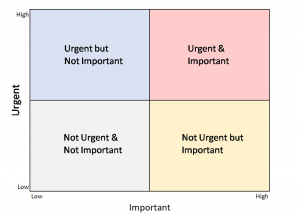
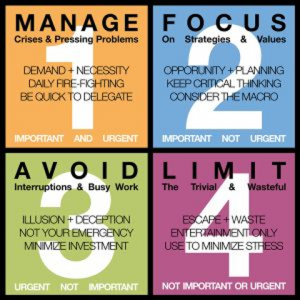
Now, make a list of all your tasks, even the routine ones, and allocate each of them in the appropriate quadrant. You will gain greater clarity on the priority of each and what you can do to work smarter.
Then – focus on managing your pressing problems, avoiding interruptions and busywork, limiting the trivial and wasteful, and giving more airtime to opportunity creating activities – the things that will spark creativity and really move your business forward.
In the work environment, when it comes to determining priorities in your document workflow, the In-Tray feature in Nimbus helps you filter all your important tasks, so you can stay on top of things.
The In-Tray view shows you which documents need to be reviewed or signed and if new file conversations were received. It becomes your virtual to-do list.
Where possible, delegate tasks that don’t require your unique capability to execute them. Or while you are busy with the task, use the opportunity to train someone else to do it. Then, once the person is capable of doing it themselves, hand the task over and give them full responsibility for it.
Even if they make minor mistakes along the way, the time you eventually free up for yourself will be worth so much more.

Holding on to certain tasks will cause your business to stagnate and not grow. So why not harness the opportunity to empower someone else along the way and make more room for yourself? And if you are the only person in the department, this might mean looking at hiring another person or outsourcing some tasks.
In Nimbus, you can easily delegate incoming tasks to other team members by simply commenting on the
document and including them in the conversation, or by selecting a pre-defined workflow status which will alert the appropriate person.
Delegation made simple!
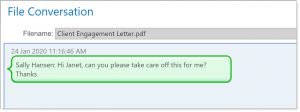
Marie Kondo, the Japanese decluttering and organising guru gives the following tips to simplify your life and increase productivity:
These principles will not only help you to become more organised in your home and office environment, but also in your document management system.

A cloud document management system, such as Nimbus, is the house you have chosen for your documents to live in.
We hope these tips have sparked some ideas and will help you boost your productivity in 2020 and beyond.
If you would like to see these and other great time-saving features in action, sign up for a demo below and let us show you how Nimbus can help with improving business productivity 2020 and beyond. For more information get in touch with us online or send our team an email on info@nimbusportals.com to get started today!